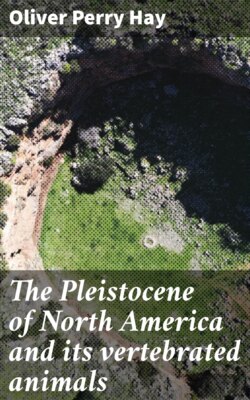Читать книгу The Pleistocene of North America and its vertebrated animals - Oliver Perry Hay - Страница 46
SOUTH CAROLINA.
Оглавление(Map 3.)
1. Beaufort, Beaufort County.—In the Charleston Museum the writer has seen a left lower canine tooth of Megalonyx jeffersonii. The fore-and-aft diameter is 34 mm., the transverse 18 mm. It is recorded as found in dredging in Coosaw River. Tuomey (Rep. Geol. South Carolina, 1848, p. 203) found fragments of bones, probably belonging to Megatherium, on Eddings Island, about 10 miles south of Beaufort.
2. Charleston, Charleston County.—In 1855, Doctor Leidy (Smithson. Contrib. Knowl., vol. VII, p. 55) stated that Professor F. S. Holmes, of Charleston, had loaned him fragments of two very small teeth of Megatherium found on the shores of Ashley River. These were figured by Leidy in 1860 (Holmes, Post-Pl. Foss. South Carolina, p. 111, plate XX, figs. 8, 8a). In a collection belonging to Rev. Robert Wilson, in Charleston, the writer has seen a tooth of Megatherium found by the Charleston Mining Company in Ashley River. G. E. Manigault (Proc. Elliott Soc. Nat. Hist., 1886, p. 91) reported the finding of a claw phalanx of Megalonyx at Cainhoy, 12 miles from Charleston, on Wando River.
In the Charleston Museum is a part of the right side of the upper jaw of Megatherium, with the second and third teeth and parts of the sockets of the first and fourth. It is recorded as having been found in the Bolton phosphate mine on or in Stono River. There is in the same museum a fragment of the left side of the lower jaw of the same animal. This jaw contains the second and third molars and parts of the socket of the first and fourth. It is recorded as having been found in the Kiawah phosphate mine, Cooper River.
The Charleston Museum contains considerable parts of the skeleton of a megatherium of which no record has been preserved. In Holmes’s “Post-Pleiocene Fossils of South Carolina,” page 111, plate XX, figures 7 to 7b, Leidy mentioned briefly and figured two small fragments of lower teeth of Mylodon harlani, which had been obtained from the Pleistocene beds of Ashley River. The tooth figured was originally described as Eubradys antiquus. Figures of it are found also in the seventh volume of the Smithsonian Contributions to Knowledge, plate XVI, figures 21a to 21c.
The Pleistocene geology of South Carolina is discussed on pp. 361 to 368.
